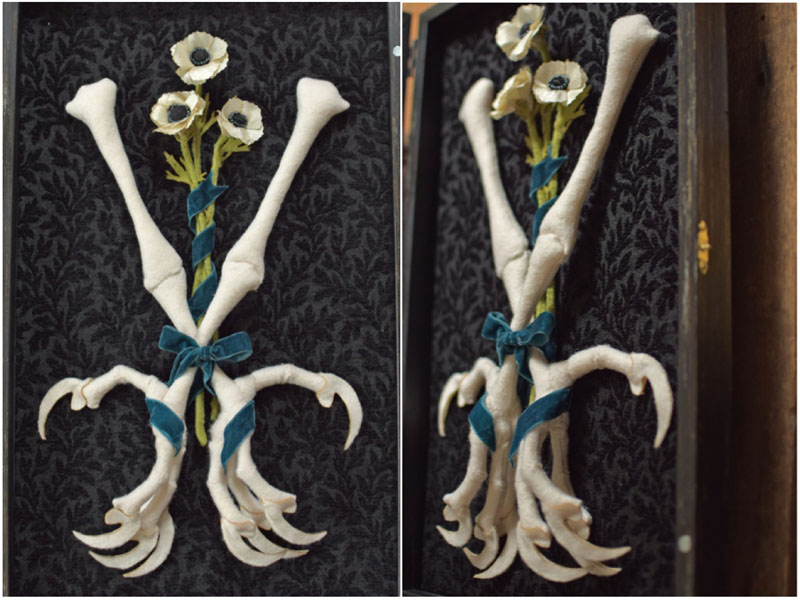b
Lana Crooks’ Soft Curiosities
Lana Crooks constructs perfect, delicate, macabre little “soft sculptures” out of hand-dyed wool, silk, seed beads, and vintage materials. They are like Victorian mourning relics in plush form. Bird skulls dripping blood like jewels, snake bones, death’s-head moths, human teeth, and lush, funereal flowers repose beneath antique bell jars. Whimsical, imaginative, resplendently colored and gorgeous, her “faux specimens” are artfully arranged, reminding one of some long-dead madcap’s oddities collection and also giving off a curious effect of two-dimensional drawings brought to three-dimensional life. These soft creations blending natural history and craft are exquisite and adorable.



